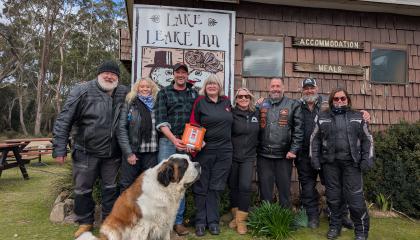International Women's Day is about forging a world where every individual, regardless of gender or any other difference, is treated with the same respect and given the same opportunities. But, let's be real for a sec: some things about us are just plain different, and we're not talking about gender roles, we are talking about the 'three bumps' of womanhood — yep, we mean the boobs and the baby bump.
We recently talked about the research that came out from the Baker Heart and Diabetes Institute and Ambulance Victoria which revealed that women experiencing a cardiac arrest are half as likely as men to receive bystander defibrillation. There are a few factors that contribute to this which we will discuss further below, but the main reason is… well… boobs!
A 2019 study found bystander reluctance to perform CPR on women was primarily due to fears of being accused of inappropriate contact as well as embarrassment around exposing a woman’s breasts. And while we understand that fear, we cannot stress enough that women would much rather be alive than embarrassed!
If you've done CPR training, there's a good chance you were trained on a mannequin without breasts. At St John Tasmania, most of our mannequins are "Resusci Anne". Although the "Anne" model has a female face and hair (it's based on an unidentified woman who died in the River Seine in the 1880s), many are flat-chested, which is why last month we added mannequins (or womaniquins) with breasts into each of our training rooms.
So what do we need to consider when performing CPR on a woman?
The first thing to understand is that the manifestation of cardiac arrest in women often differs from that in men, potentially leading to delays in recognition and action. While men who had a cardiac arrest frequently reported chest pain leading up to their attack, women are more likely to exhibit symptoms such as fatigue, breathlessness, and nausea, which might be misinterpreted for less critical conditions.
When it comes to performing chest compressions on a woman, the hand placements remain the same. You should place the heel of one hand on the lower half of the sternum where their ribs come together. Yes, this will mean you will likely touch the woman’s breasts, but as we said, saving a life is more important than being embarrassed!
What about defibrillation?
If defibrillation is required, it is crucial to remove the bra, especially if it contains underwire.
Defibrillators work by delivering an electric shock through the chest to the heart to restore a normal heartbeat. For this process to be effective, the shock needs a clear, unobstructed path. Metal underwires in bras can interfere with this path in a couple of ways. Firstly, they can deflect or redirect the electric shock away from where it's needed most, potentially reducing the effectiveness of the defibrillation. Secondly, and perhaps more alarmingly, metal conducts electricity and can cause burns to the skin or even more severe internal injuries if it becomes a conduit for the defibrillator's shock.
Therefore, in emergencies requiring defibrillation, responders are trained to quickly remove or cut away any clothing that might interfere with the shock's path, including bras with underwire. This is not about discomfort or embarrassment; it's a critical step to ensure the defibrillator works as intended.
What about the third bump – the baby bump?
Bystander hesitation is even more pronounced in pregnant women, but with First Aid training, you can learn specific considerations to keep in mind to ensure the safety of both the mother and the baby.
For a pregnant woman who requires CPR, positioning is important. If possible, tilt the pregnant person’s body slightly to the left to alleviate pressure on the inferior vena cava (a large vein that carries blood from the lower body to the heart), which can be compressed by the uterus in late pregnancy.
This compression can decrease blood return to the heart and reduce blood flow to the brain and other vital organs. Using a towel or a piece of clothing to prop her right side can achieve this tilt. If this isn't possible, proceed with CPR without the tilt and perform chest compressions as you would for any adult CPR.
International Women's Day serves as a rallying cry to acknowledge and confront the unique obstacles faced by women, including in the realms of health and safety. By narrowing the gap in bystander intervention and CPR for women, we advance not just gender equality but also enhance our collective capacity to save lives. Let this day remind us of our shared duty to protect and empower every member of our community, irrespective of gender.




